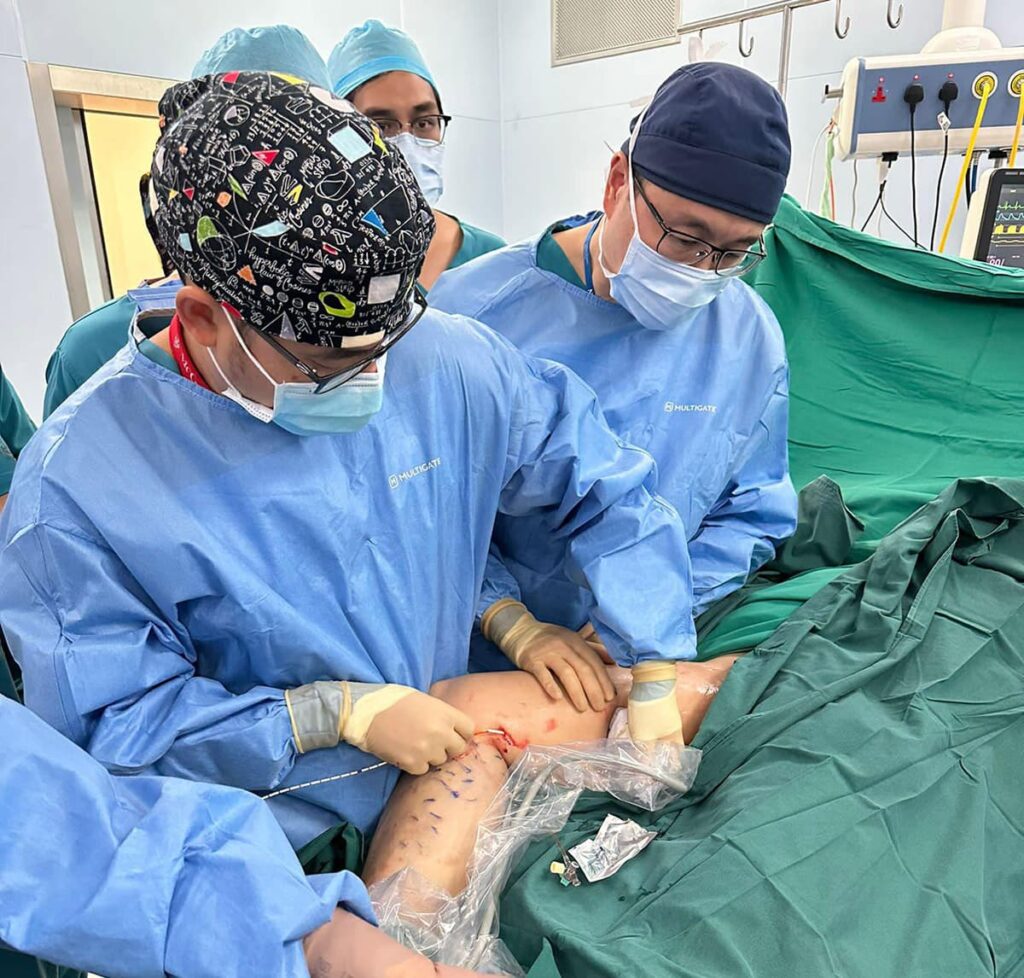US President Donald Trump has been diagnosed with chronic venous insufficiency, a condition identified after mild swelling was observed in his lower legs.
In a letter released by the White House, the president’s doctor noted that the condition is common and doesn’t pose immediate health risks.
So, what exactly is chronic venous insufficiency? What causes it — and could it lead to more serious health issues? Here’s what you should know.
A Condition That Affects the Veins
Veins carry deoxygenated blood from the body back to the heart.
Insufisiensi vena kronis is a condition that primarily affects the veins in the legs. It occurs when blood has trouble flowing upward toward the heart, causing it to pool in the lower limbs instead.
This buildup increases pressure in the leg and foot veins, leading to symptoms such as swelling (oedema), easy bruising, skin discolouration, varicose veins and in some cases, skin ulcers.
What Causes Chronic Venous Insufficiency?
Chronic venous insufficiency (CVI) occurs when the valves in the leg veins become weakened or damaged. These valves usually help direct blood back toward the heart. When they fail, blood can flow backwards (venous reflux) and pool in the legs.
Vein wall damage can also play a role. Ageing, inflammation or smoking can roughen the inner lining, causing blood to stick and slow circulation.
External pressure on pelvic veins, from pregnancy, obesity or tumours, can restrict blood flow from the legs and raise venous pressure.
Deep vein thrombosis (DVT) is another risk factor. Clots in deep veins can block flow or damage valves, increasing the chance of CVI. Studies show 10–15% of CVI cases involve past DVT.
According to Trump’s physician, there is no evidence of prior DVT in his case.

Faktor risiko
Chronic venous insufficiency is relatively common, though exact figures for Singapore are not well established. International data suggest that between 10% to 35% of adults may be affected and prevalence is likely similar in urban populations here.
Several factors increase the risk of CVI, including:
- Merokok – damages blood vessels and vein walls
- History of deep vein thrombosis (DVT) – can weaken or block veins
- Usia yang lebih tua – veins lose elasticity and valves may weaken over time
- Kehamilan – increases pressure in the pelvic veins
- Kegemukan – adds strain on the leg veins
- Prolonged standing – affects blood flow back to the heart
These factors can contribute to poor circulation in the legs, making it harder for blood to return to the heart efficiently
Does Chronic Venous Insufficiency Pose Any Health Risks?
While chronic venous insufficiency (CVI) isn’t life-threatening on its own, it’s a progressive condition that can lead to more serious complications if left untreated.
One concern is the risk of deep vein thrombosis (DVT):
Although DVT can lead to CVI, the reverse is also true. When blood pools in the legs due to poor circulation, it can become stagnant and form clots. These clots can then travel to the lungs and cause a potentially life-threatening pulmonary embolism.
Another common complication is venous ulcers. These are open wounds that form due to prolonged pressure in the veins. They’re often painful, slow to heal and prone to infection, such as cellulitis. In many cases, they recur if the underlying vein issues aren’t addressed.
How is Chronic Venous Insufficiency Treated?
Treatment for chronic venous insufficiency (CVI) depends on how severe the condition is. The main goals are to improve blood flow, ease symptoms, and prevent complications like venous ulcers. Conservative measures are usually the starting point for managing CVI and these can include:
Compression Therapy
Wearing graduated compression stockings (typically 20–30 mmHg or higher for ulcers) helps reduce swelling and support blood flow. Pneumatic compression devices may be used if stockings aren’t suitable.
Leg Elevation
Raising the legs above heart level helps reduce pressure and pooling in the veins.
Exercise & Movement
Regular walking and calf exercises improve circulation and assist the leg muscles in pushing blood back to the heart.
Lifestyle Adjustments
Managing weight, caring for the skin, and avoiding long periods of standing or sitting can all reduce symptoms and prevent worsening.
Medications (in select cases)
Drugs like pentoxifylline may help ulcer healing when used with compression. Aspirin is sometimes considered in specific situations.
Medical & Surgical Treatments (For More Advanced or Refractory Cases)
Minimally Invasive Procedures
- Skleroterapi: Injection of a solution to close small to medium veins
- Endovenous Ablation (Laser or Radiofrequency): Closes faulty veins using heat
- Phlebectomy: Removes superficial veins through small incisions
- Vein Sealing: Adhesive-based techniques (e.g., glue closure) for suitable cases
Surgical Options
- Vein Ligation & Stripping: Removal or tying off of large surface veins
- Deep Vein Procedures: Angioplasty or stenting for blocked deep veins
- Bypass Surgery: Rarely used, reserved for severe cases
Ulcer Care
- For patients with venous ulcers, care may include specialised dressings, wound clinics and advanced therapy.
Long-Term Success: Sticking to compression therapy and lifestyle advice is key for long-term management. Treatment plans are tailored based on individual needs, severity, and overall health, with non- or minimally invasive options preferred where possible.
Recent Developments


Key Takeaway

Trump’s diagnosis reflects a common vein condition seen in older adults, and his doctors have confirmed there’s no serious underlying issue.
Still, it highlights the need to pay attention to vascular health. Chronic venous insufficiency may start off mild, but it can progress and lead to more serious problems if not addressed early.
Whether it’s leg swelling, discomfort or visible vein changes, recognising the signs and understanding the risk factors is key. Early intervention and healthy habits can go a long way in preventing complications.







